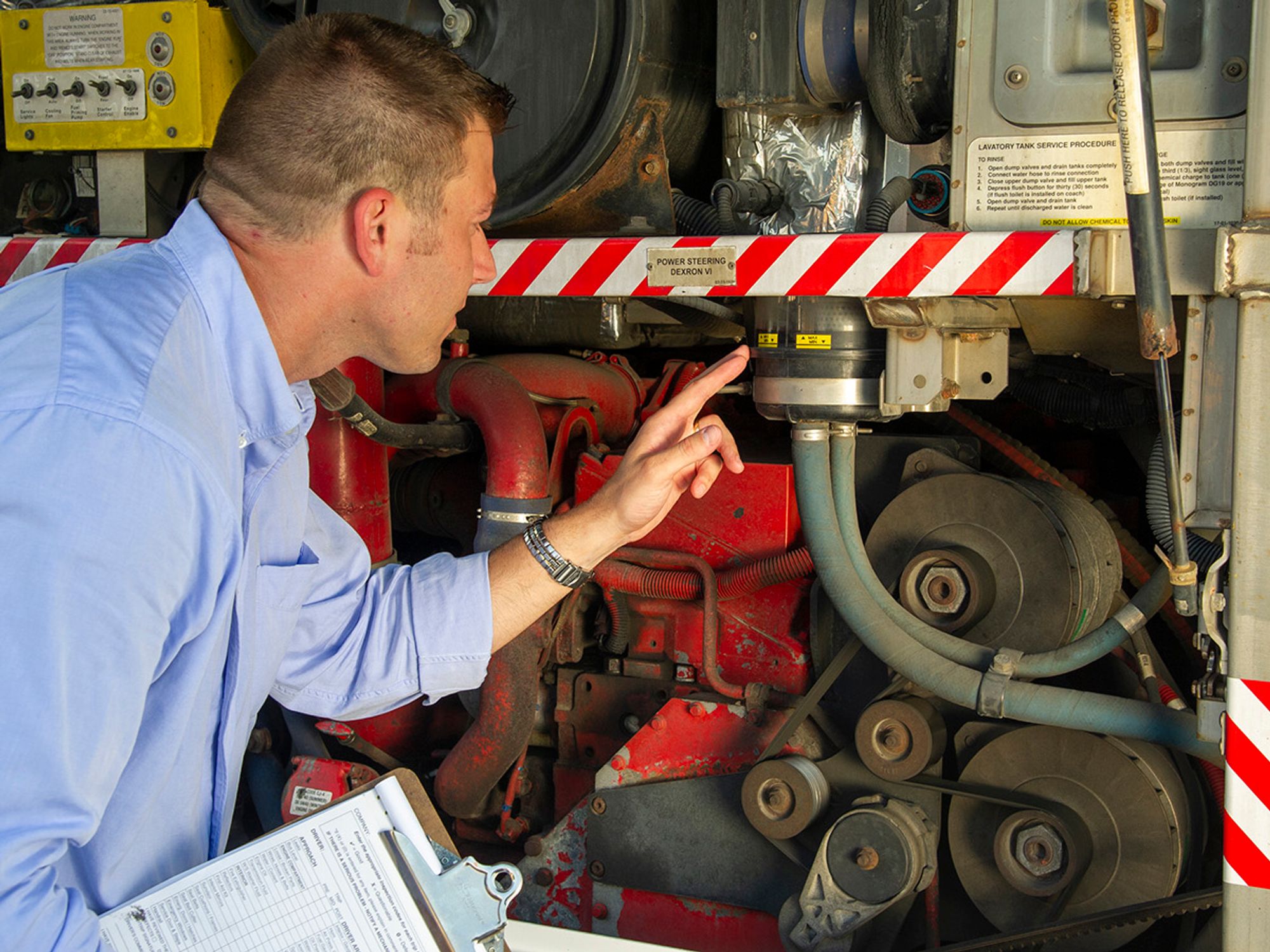Systematic CMV inspections

- The interval between systematic inspection and maintenance of a commercial motor vehicle is up to the carrier to decide (besides the required 90-day systematic inspection required for bus pushout windows, emergency doors, and emergency door marking lights).
- The interval between inspection and maintenance is often based on the original equipment manufacturer (OEM) recommendations, vehicle history, and vehicle use, but whichever interval is used by the carrier, it must be reasonable and systematic.
Each motor carrier and intermodal equipment provider is required to “systematically inspect, repair, and maintain, or cause to be systematically inspected, repaired, and maintained, all vehicles subject to its control.” (49 CFR 396.3) Although the regulations do not specify the details, they do mandate the inspection, repair, and maintenance of:
- All parts and accessories specified in Part 393, and any additional parts and accessories which may affect safety of operations, including (but not limited to) frame and frame assemblies, suspension systems, axles and attaching parts, wheels and rims, and steering systems.
- For buses only: pushout windows, emergency doors, and emergency door marking lights are to be inspected at least every 90 days.
Other than the 90-day systematic inspection for buses, the interval between “systematic” inspection and maintenance operations is left to the carrier to decide. The interval is often based on time or mileage, such as every 10,000 miles or every three months, for example, depending on OEM recommendations, vehicle history, and vehicle operations. The exact elapsed mileage or time — and the actions that are performed at that mileage/time — is left to the discretion of the motor carrier, but the program must be reasonable and systematic. Once a systematic inspection and maintenance program is established, the carrier is expected to follow it and document the inspections and maintenance as it occurs.
Unsafe operations
When a vehicle is found to be defective to such an extent that it is likely to break down or cause an accident, it cannot be operated. Vehicles that are found to be defective while en route may only be operated to the nearest place where repairs can safely be made, and only if that is less hazardous than remaining on the roadway.
